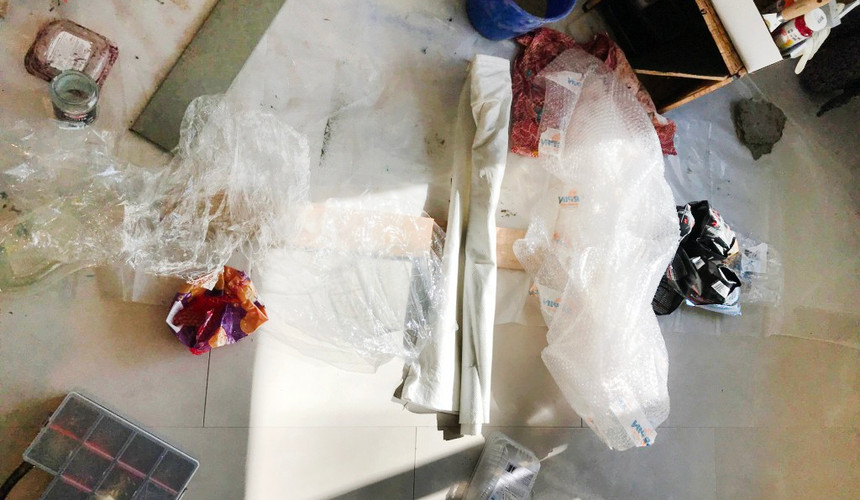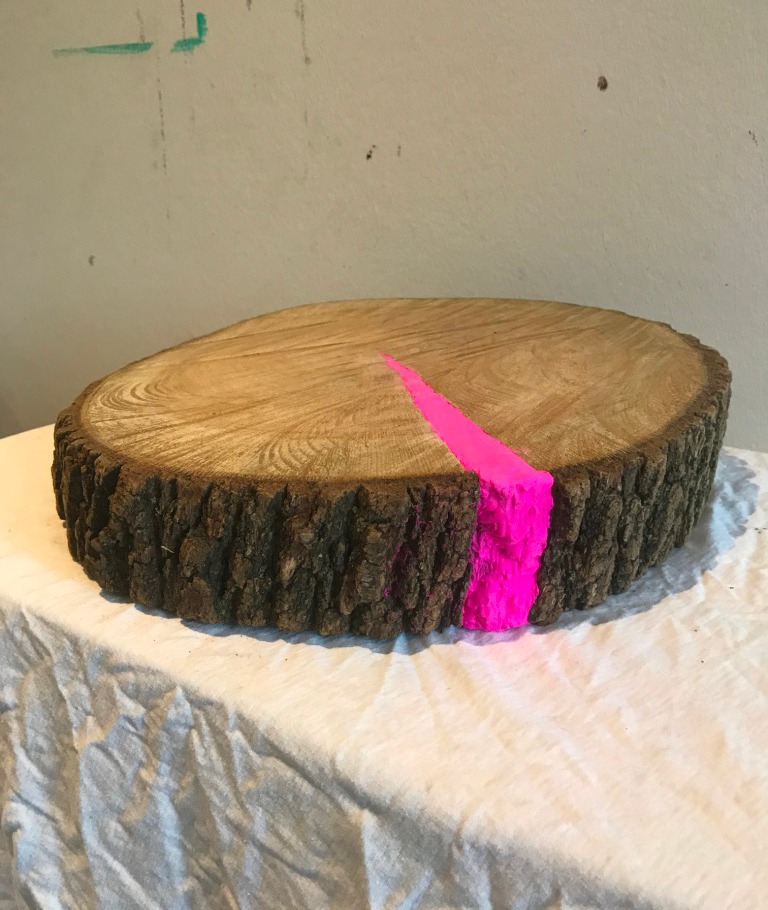Shallow relief sculpture 0
- Marina WitteMann
- Apr 6, 2020
- 5 min read
Inspiration

Michael Reeder
Michael Reeder (2018) “False Guru” Concrete, potassium silicate, MDF, acrylic, latex and spray paint, 28 × 36 cm [Object] At: https://thinkspaceprojects.com/artists/michael-reeder/ (Accessed 23.03.2020)
I was interested in texture in the work of Reeder. The use of cement and plywood creates an interesting interaction of materials. It would seem that it looks like a picture, but the technique attracts attention and makes you research the subject, this creates peculiar interest to the context. That is, the head of a person is made of cement and cracked, this leads to the conclusion that it is rather a sculpture. Part of it painted over. The colours are solid without a pattern. Such a peculiar analysis of a person’s personality with cracked elements of history and a modern yellow void.

Nestor Engelke
Nestor Engelke (2019) Wooden Portrait No. 4, wood, axwriting 57 x 78 cm Нестор Энгельке, Деревянный портрет №4, 2019, дерево, топоропись 57 x 78 см [Object] At: https://vladey.net/ru/lot/4994 (Accessed 23.03.2020)
Through wood, a person’s state is expressed, cuts create his flesh, and possibly refer to his internal state. Natural, simple. For me, this work refers to the icon, because they were painted on such boards and the image was similar to presented composition. At the same time, the hole looks like a smirk, which creates an ambiguous impression.

Dmitry Aske
Dmitry Aske 2016 From the «Reality 2.0» series, plywood, acrylic 125 x 100 cm Дмитрий Аске 2016 Из серии «Reality 2.0», фанера, акрил 125 x 100 см [Object] At: https://vladey.net/ru/lot/4968 (Accessed 23.03.2020)
The artist uses painted plywood in bright colours. He creates kind of the pixels at the bottom of the work. This technique is used in industrial printing on paper. But when we see such a pattern on the plywood it makes the viewer refer to mass or machinery production. The themes of Dmitry Aske works are everyday scenes from life or Russian folklore.
Work
To convey the essence of the problem or hint at it, I need to use materials directly or indirectly referring to the culture of Smartphones.
Materials with a smooth surface are plastic, glass, or microcircuits, something digital, luminous, always a rectangular shape.
Gestures, the behaviour of people with this object - we hold the smartphone in our hands; if we use a computer, we type on the keyboard, turn the mouse wheel, stare at the screen; TV - spellbound watch a movie for 1,5 hours. The general idea of these devices - a rectangular surface that is drawn to the head.
How to endow the material with the meaning of the problem?

I will outline here a few thoughts, problems that interest me and which I would like to convey in my current work. Probably not all, but one, but let there be a choice. This is a stream of thoughts - a draft ... a search ... not an academic essay.
I see here both problems and advantages in our attachment to the phone. On the one hand, it simplifies our life. Makes information simply accessible. On the other hand, the camera and the phone screen have become a tool for seeing the world, like glasses on our faces. Studying the world through the viewfinder, through the phone’s camera, through square photos on social networks has become a necessity.
We cannot see the beauty of nature as a whole without the limited space of the phone, that is, it must be a flat square/rectangular (size of the telephone, computer, TV, etc. screen) photograph, video or something ... Frame. FRAME. Restriction. Picture in the frame.
Attachment to this device can be expressed physically: tied with ropes, glued with adhesive tape, knocked down with nails. Reflex affection - the conference call is over - you need to check if there is a missed notification/sms. Functional affection - the convenience of calls, information control, etc.
Selfies. Perhaps this is not a problem for society. Not the problem of narcissism. But the fact of this action has changed our behaviour and perception of visual culture. With the camera, it became possible to take pictures of anything and even yourself in strange positions, but only with the advent of the Smartphone did the phenomenon of selfie appear. A person takes a photo of himself with a limited distance of his outstretched arm. In the constant use, through generations, fingers and arms will be longer;).
Small sketch:

A few thoughts were embodied in the form of sketches or samples with objects.
In the following posts, I will pay special attention to several works separately.
I was interested in the rectangular shape as such. As an experiment, I took for the limited space just the contents of my bag. 90% of things are rectangular.
Our attachment to the phone. Using the phone deprives us of independent thinking (imposed content, advertising, friends chosen for you and a circle of interests), we cannot make our way home without a Google map, on the other hand, the speed and simplicity of everything. It is like the burden of this time and the perfection of progress. It is a small sketch on this subject. I don’t want to add anything else here, it seems to me an eloquent work. Accurately describes the situation from two sides. I was thinking about changing the colour of this cement phone case, but as a result, I rejected this idea, because to see and feel the material is a part of an impression.

Phone case, 2020, cement, Smartphone, L 16.5 x W 11.5 x H 2.5 cm.
But I wanted to try to realize some ideas. That is to say, to do and to forget.
I'm interested in the topic of plastic, its impact on the environment and our widespread use of this material. Before moving to Germany, I did not think about the amount of my own consumption of this material. In my opinion, our century is a century of plastic. Therefore, I wanted to work with this material, to feel it. Do not throw away used material, but transfer it to the category of art. I wanted to see how different textures and forms behave if they are ordered and the colour changed. So to say represent emotions with colour and build rhythm out of given forms. Also, for the use of plastic on the street or in rooms with high humidity, this material will be indispensable. Lightweight, pliable, does not rot, and the other advantages of working with it inspired me. I will probably continue to experiment with it.
One week, 2020, plastic materials used per week, L 168 x H 108 x W 20 cm.

I tried to do something with the phone. As a result, in contrast, I simply repaired a piece of cracked wood. Contradictory materials are interfering but together. Contradiction, 2020, wood, polymer clay, D 33 x H 6 cm.
Bibliography and references
1. Age of the Image BBC Documentary series [online] At: https://youtu.be/YCtlK83xoiw (Accessed 02.04.2020)






































Comments